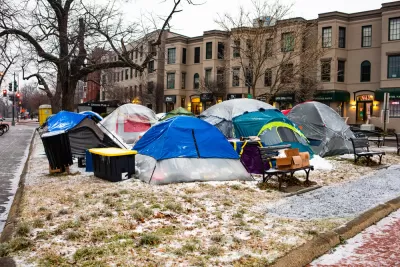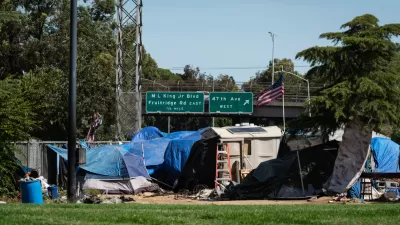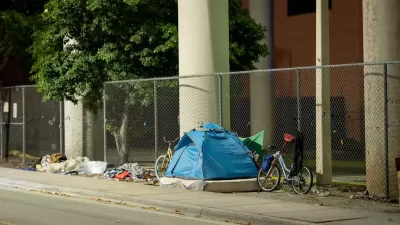One year into a pilot program to reduce encampments by offering housing and services to residents, almost three-quarters of participants have moved into housing.

According to an article by Chelsea Cirruzzo in Axios, Washington, D.C.’s Coordinated Assistance and Resources for Encampments (CARE) pilot program, aimed at reducing homelessness in the District, has seen roughly 72 percent of program participants entering into temporary housing leases.
“The program focused on four of the largest encampments — and offered some residents one-year leases with the intention of moving them into permanent housing,” Cirruzzo writes. “Among the four sites, 100 of the 139 eligible people received leases, according to Deputy Mayor for Health and Human Services Wayne Turnage. The remaining 39 either opted out of the pilot, no longer reside at the encampment, or are still working with outreach to find housing.”
Cirruzzo notes the limitations of the program: “Only residents who had been on a list of individuals waiting for housing were offered leases, so the pilot did not account for everyone living within these encampments.”
Advocates for unhoused people have criticized the District’s approach to clearing homeless encampments through forceful sweeps, Cirruzzo notes. “Miriam’s Kitchen and Pathways to Housing DC, the CARE housing contractors, tell Axios that they oppose permanently closing encampments because it can be traumatizing for residents.” Sweeps can also be counterproductive, reducing trust in government entities and making unhoused people more reluctant to accept or seek out services.
FULL STORY: D.C.'s homeless encampment plan, 1 year later

Trump Administration Could Effectively End Housing Voucher Program
Federal officials are eyeing major cuts to the Section 8 program that helps millions of low-income households pay rent.

Planetizen Federal Action Tracker
A weekly monitor of how Trump’s orders and actions are impacting planners and planning in America.

Ken Jennings Launches Transit Web Series
The Jeopardy champ wants you to ride public transit.

California Invests Additional $5M in Electric School Buses
The state wants to electrify all of its school bus fleets by 2035.

Austin Launches $2M Homelessness Prevention Fund
A new grant program from the city’s Homeless Strategy Office will fund rental assistance and supportive services.

Alabama School Forestry Initiative Brings Trees to Schoolyards
Trees can improve physical and mental health for students and commnity members.
Urban Design for Planners 1: Software Tools
This six-course series explores essential urban design concepts using open source software and equips planners with the tools they need to participate fully in the urban design process.
Planning for Universal Design
Learn the tools for implementing Universal Design in planning regulations.
Ada County Highway District
Clanton & Associates, Inc.
Jessamine County Fiscal Court
Institute for Housing and Urban Development Studies (IHS)
City of Grandview
Harvard GSD Executive Education
Toledo-Lucas County Plan Commissions
Salt Lake City
NYU Wagner Graduate School of Public Service





























